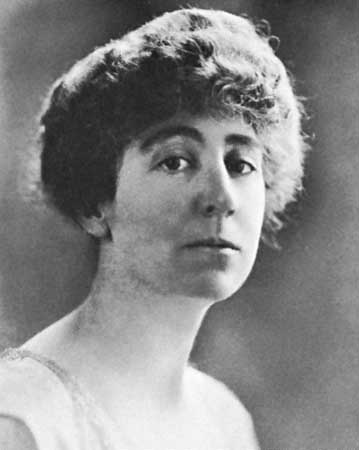Jeannette Rankin
|
Early Life
Jeannette Rankin was born in Missoula, Montana on June 11, 1880. Her father was a rancher while her mother was a teacher. After graduating from Montana State University in 1902 with a degree in biology, she worked for a short time as a teacher. Rankin later quit her job and attended the New York School of Philanthropy from 1908 to 1909. She then was employed as a social worker in Montana and Washington. While attending the University of Washington, Rankin became involved in the women’s suffrage movement. She was made legislative secretary of the National American Woman Suffrage Association (NAWSA). Through her help, women in Washington gained the right to vote in 1910. Next, Rankin moved back to Montana to work for women’s suffrage there. Montana women were able to vote in 1914. First Term in
Congress
Rankin ran for a House seat from Montana 1916. She pledged to work for woman suffrage and social welfare issues such as ending child labor. In addition, Rankin, a strong pacifist, campaigned for the United States to stay out of World War I. Partly due to her reputation as a suffragist and the political connections of her brother, she won the election and came in second. She became the first woman to serve in Congress and was sworn in as a Member of the 65th Congress on April 2, 1917. On April 5, the House debated on whether or not the United States should enter World War I. Due to her strong pacifist beliefs, Rankin voted no. The final count was 374 for the war and 50 against it. Rankin supported the establishment of the Committee on Woman Suffrage and was appointed to it after its formation. It reported out a constitutional amendment that granted women the right to vote. The amendment was only just passed in the House but rejected in the Senate. However, through Rankin’s help, the Nineteenth Amendment was finally passed in 1920. After a mining accident in Butte, Montana killed 168 workers, miners staged a large strike and protest for better working conditions. In response, Rankin personally intervened and tried to ask the Wilson administration for help through laws. However, her attempts failed because of the refusal of mining companies to meet with Rankin or miners. After First Term
After her two year term ended in 1919, Rankin ran for a seat in Senate. However, she lost and came in second in the Republican primary due to her controversial views on war, trade union rights, equal pay, and birth control. Despite this, Rankin still continued to work for pacifism and women’s suffrage. She attended the Women’s International Conference for Permanent Peace in Switzerland in 1919 and joined Women’s International League for Peace and Freedom. In addition, Rankin was the leading lobbyist and speaker for the National Council for Prevention of War from 1929 to 1939. Second Term
Rankin finally returned to politics in 1939 when she ran for her second term in the House and won with 54% of the votes. At the time, World War II was already taking place in Europe but the United States was still debating on its entry in it. Rankin introduced an amendment in February 1941 that required Congress to approve deploying troops abroad but it failed. In addition, she also proposed a resolution to stop sending troops outside of the Western Hemisphere or American possessions. That too failed. After the Japanese attack on Pearl Harbor, a Joint Session of Congress was held to decide the U.S.’s participation in World War II. Rankin was the only member to vote no. This vote made the rest of her term irrelevant, as she was later ignored and became unpopular. Rankin left office in 1943. After Second Term
Even after her second term, Rankin did not stop working for pacifism. At the age of 87, she led 5000 people in a march in Washington protesting the Vietnam War. She died in May 18, 1973 in Carmel, California at the age of 93. She was thinking of running again for a House seat.
|